Whether it’s a charm, amulet, or statue, humans have been using good luck charms for thousands of years for anything from bringing financial success to warding off evil. Some good luck charms are seen throughout many cultures while some are unique to a certain culture. Keep yourself safe and prosperous with these 25 good luck charms from around the world.

Acorn
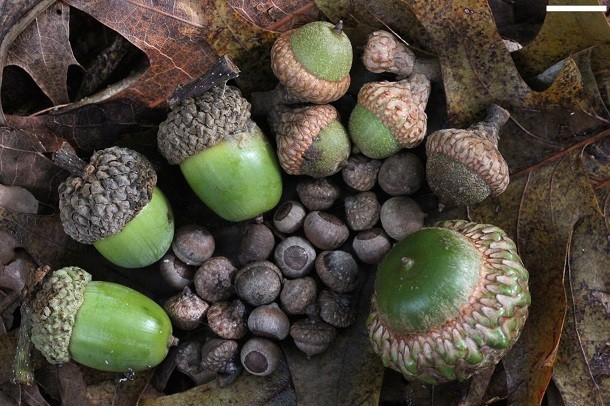
In Norse (Viking) culture, a single acorn is put on a windowsill to protect the home from lightning strikes. Since oak trees (where acorns come from) attract lightning, the Vikings saw them as having been spared the wrath of Thor, the Norse god who created thunder and lightning.
Alligator Teeth
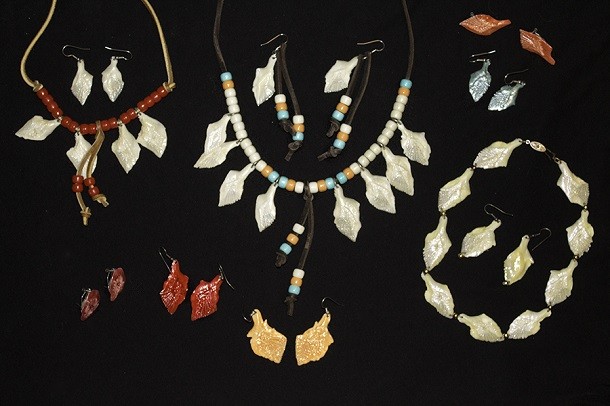
Wearing the tooth of an alligator isn’t just for Steve Irwin or Californian surfers – some African cultures believe alligator teeth bring good luck while gambling.
Bamboo
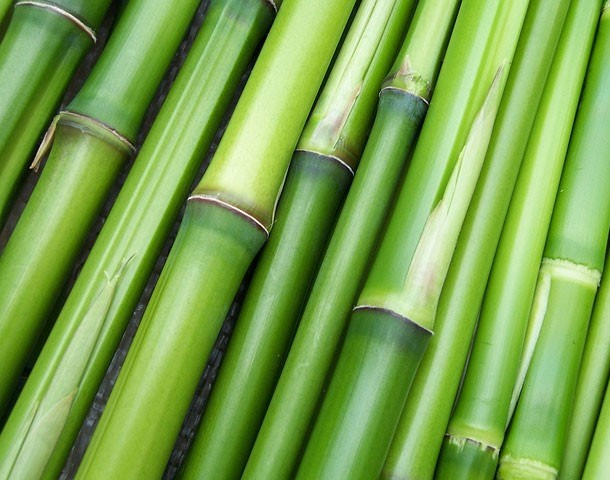
Commonly sold as lucky bamboo but more appropriately named friendship bamboo, giving a gift of this plant is said to bring the receiver good luck. Putting a friendship bamboo plant on the east part of a room will improve your chi (energy), according to Feng Shui.
Triangle
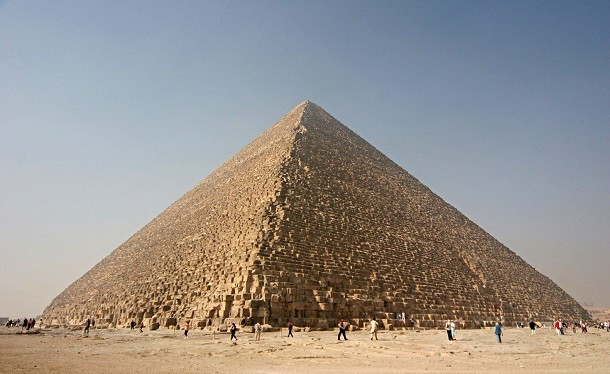
Triangles are centrally featured throughout history due to their strength as a structure and their three sides representing the life cycle: birth, maturity, and death. Triangles are often attributed to Egyptian pyramids and the symbol on the back of U.S. dollar.
Cricket
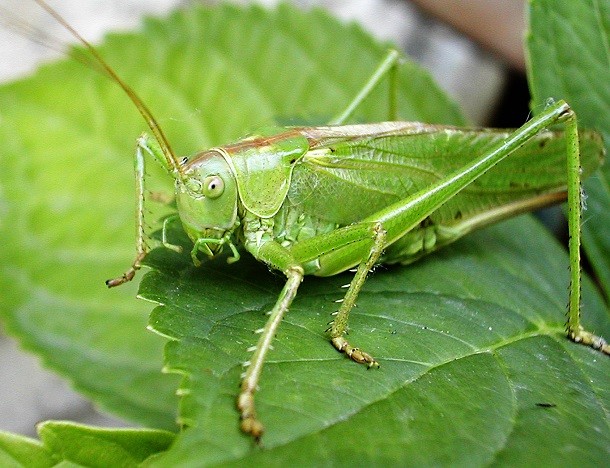
Crickets are a sign of good luck especially in Asian and Native American cultures. It is terrible luck to kill a cricket, even if accidentally. They are seen by some Asian cultures to act as a protector of the house, stopping their chirping whenever danger is near.
Horseshoe
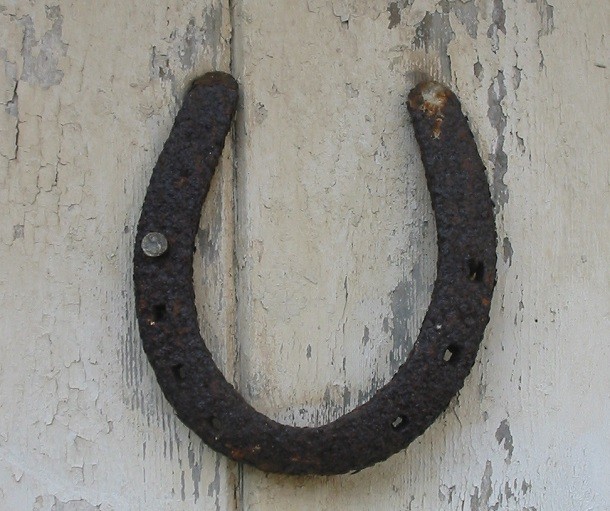
Drawing on the strength and power of a horse, horseshoes are powerful good luck charms. A legend of Saint Dunstan from the 10th century says he trapped the devil in a horseshoe; thus, putting one above your door protects your home from evil. An upward-facing horseshoe is said to gather luck and a downward-facing one is said to cover you in good luck. (Though, we’re not entirely sure what’s the difference between those two.)
Kachina
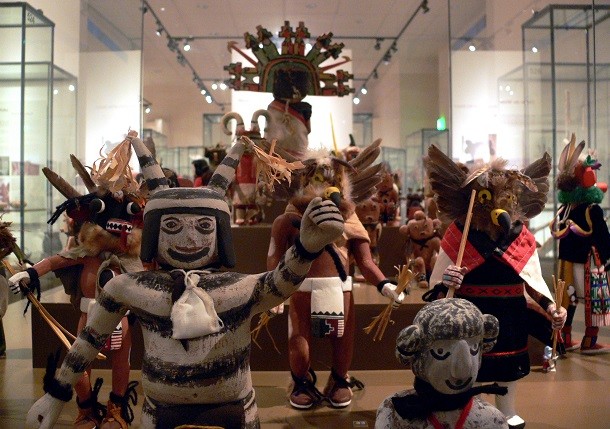
Kachinas are dolls which represent the spirits of things in the real world to Native Americans in the American Southwest and Central America. The dolls are dressed up and often played with by children. Inviting the doll’s spirit into one’s home and family is said to bring a good harvest.
Dream Catcher
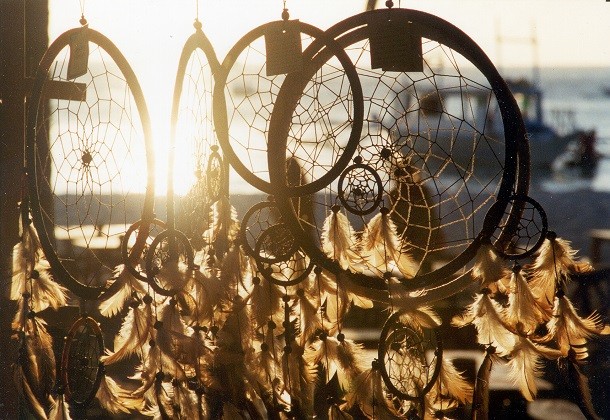
Native American culture prominently features dream catchers to gather good dreams and do away with bad dreams. The reason comes from the story of Nokomis, the grandmother in Ojibwa folklore. Nokomis watched a spider weave its web day-after-day until one day her grandson came in and tried to kill the spider. She protected the spider and, in return, the spider went to the window and spun a fresh web in the moonlight. It told Nokomis: “See how I spin. See and learn, for each web will snare bad dreams. Only good dreams will go through the small hole.”
Evil Eye
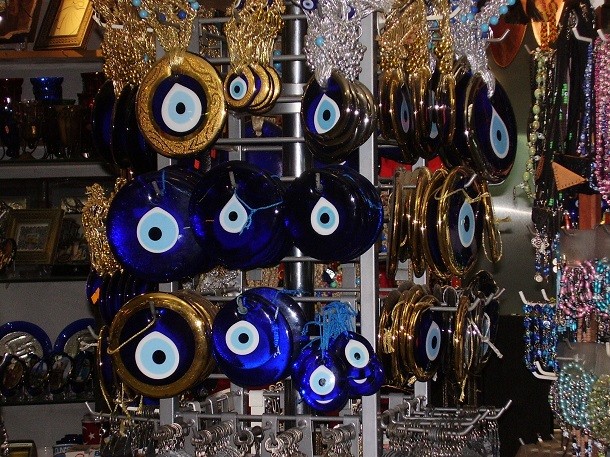
Featuring prominently in Middle Eastern cultures, an Evil Eye amulet wards off the Evil Eye: a curse received from the malicious glance of another, often unbenounced to the one being glared at. The amulet protects the wearer from this evil glance and is one of the most popular tourist buys across the Middle East.
Scarab
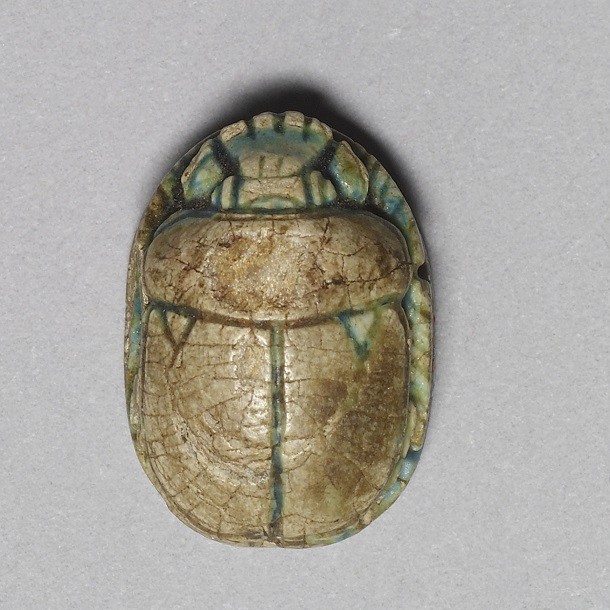
Scarab beetle amulets were especially common in ancient Egypt. They represented the rising sun, warded off evil, and were associated with rebirth and transformation.
Imperial Guardian Lion
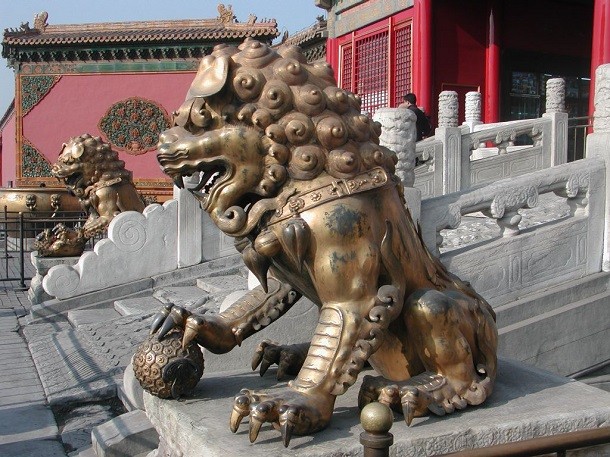
Imperial Garden Lions, also called Fu dogs, are seen throughout Asia, especially China. The statues are generally placed in a pair outside one’s home to ward off burglars and thieves (especially for the wealthy) which is why they’re often seen outside of palaces and temples.
Ladybugs
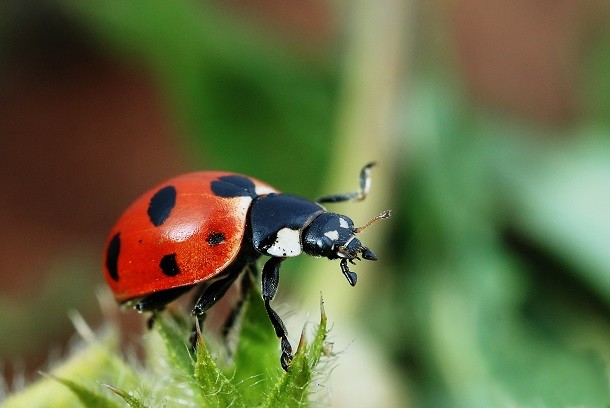
Most bugs shouldn’t be welcomed in your garden, but if a ladybug comes by, welcome it. This good luck charm is said to bring good luck and prosperity, especially if it lands on your hand. If a woman has been recently married, the spots on the back of a ladybug landing on her hand are said to indicate how many children she will have.
Ankh
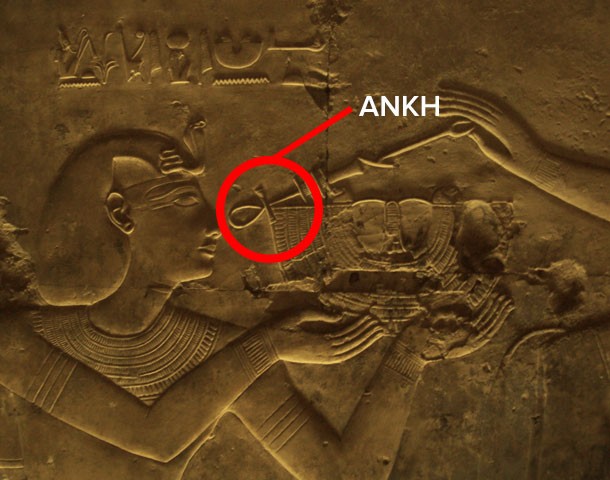 Image by: Institute for the Study of the Ancient World via Flicker CC 2.0 (edited to label the Ankh).
Image by: Institute for the Study of the Ancient World via Flicker CC 2.0 (edited to label the Ankh). The ankh is one of the most pervasive remnants of ancient Egyptian culture. Pharaohs often wore the amulets as symbols for eternal life. Many images show the gods holding an ankh to a mortal’s lips, infusing them with the “breath of life” required to take someone through to the afterlife.
Coins

From a lucky penny to lucky Chinese coins, these pieces of money are important good luck charms in many cultures. Rule has it that you only pick up a coin if it’s face-side up. You’re supposed to increase your luck if you wear a bent coin around your neck or keep it in your left pocket. Many people also include a coin in a new coat, wallet, or pair of shoes.
Dragon
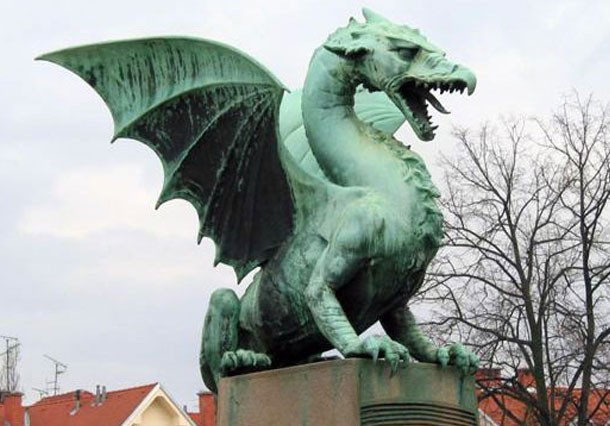
The power and regality of a dragon passes onto you when in possession of a dragon statue or charm. Especially useful if you’re looking to advance career-wise, a dragon charm is said to give you leadership skills and nourish your position in the company.
Pig
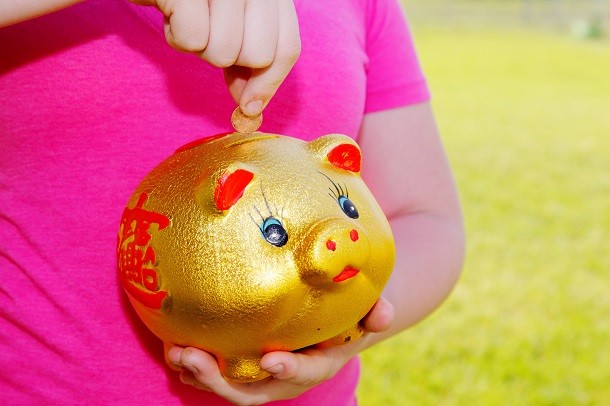
Pigs represent wealth and prosperity throughout Europe (and in some parts of Asia). Chinese mythology also attributes honesty and diligence to the pig. It’s easy to see why, then, a pig was chosen to hold money in the form of a piggy bank.
Rabbit's Foot
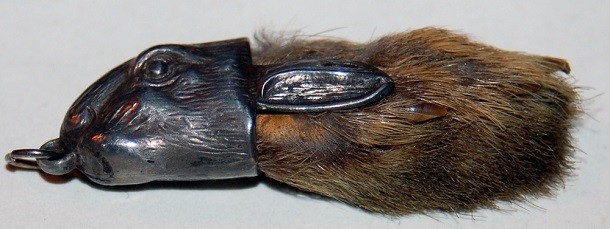
A rabbit’s foot is considered a good luck charm but only if it comes from the hind legs. The foot represents fertility due to rabbits’ incredibly high reproductive rate. If you wear a rabbit’s foot, it’s said you’ll mother/father a child soon.
Laughing Buddha
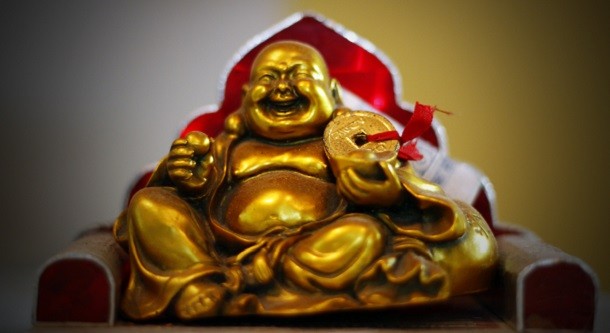 Image by Natesh Ramasamy via Flicker CC 2.0
Image by Natesh Ramasamy via Flicker CC 2.0 Out of the many Buddha statues out there, the laughing Buddha is especially lucky because it uses his spiritual wealth to bring you material wealth. Feng Shui recommends placing one in the west part of your home to bring health and wealth.
Wishing Well

Cultures around the world are familiar with the throwing of a coin into a well or fountain. Occasionally tossing a coin into a well is said to placate the gods and keep the well from going dry. If you look at your reflection in a still pool, make a wish and toss in a coin for your wish to be granted.
Three-Legged Toad
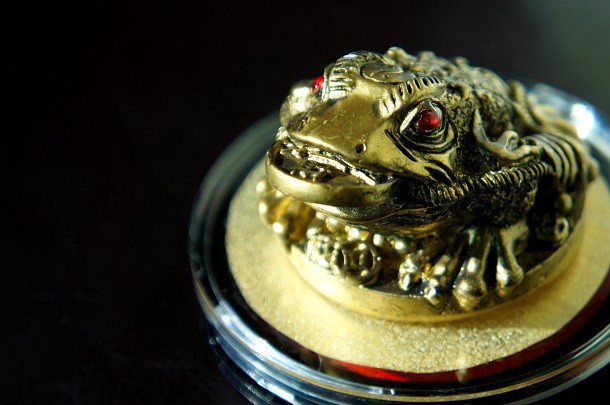
Besides the laughing Buddha, the three-legged toad is one of the most common good luck charms in some Asian cultures. Most statues come with a coin in the toad’s mouth which must feature the Chinese characters pointing upwards. Never point the toad towards a door leading to the outside of your home.
Ladder

Many people believe walking under a ladder propped up against a wall brings bad luck. This is because walking under a ladder is said to break the unity of the three-member unit represented by a triangle (#22) – either the family (two parents and a child) or the Holy Trinity (Father, Son, Holy Spirit). If you do walk under a ladder, fix your luck by crossing your fingers and spitting through its rungs three times. (Bonus fact! Ancient Egyptians included ladders in dead peoples’ tombs to help them reach heaven.)
Cat's Eye
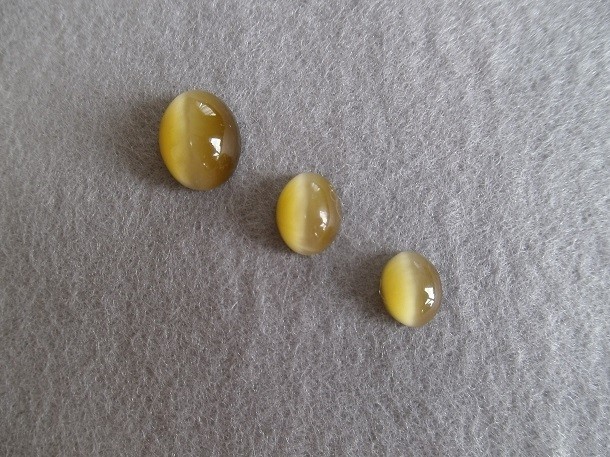
The cat’s eye is a special gemstone said to repel the Evil Eye and clear obstacles in one’s life. Gamblers frequently wear or have them to prevent losses as they’re said to prevent unseen potential losses.
Key
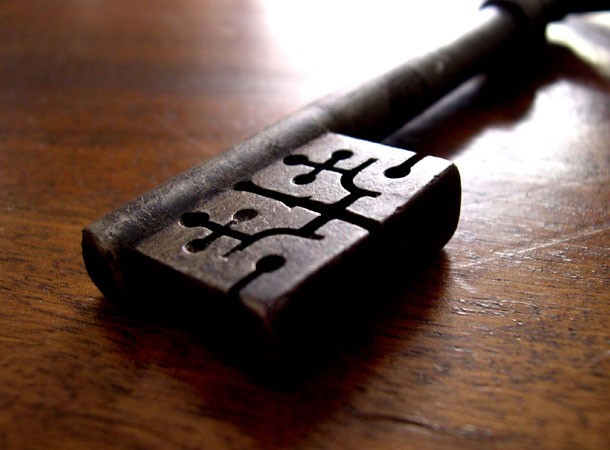
The main way to unlock anything from a heart to a door, the key has been a good luck charm for longer than most. Ancient Greeks and Romans believed a lucky key unlocked the door to the gods, allowing one’s prayers to reach their ears. In Japanese culture, it’s lucky to have three keys tied together as they will unlock the doors to health, wealth, and love.
Elephant
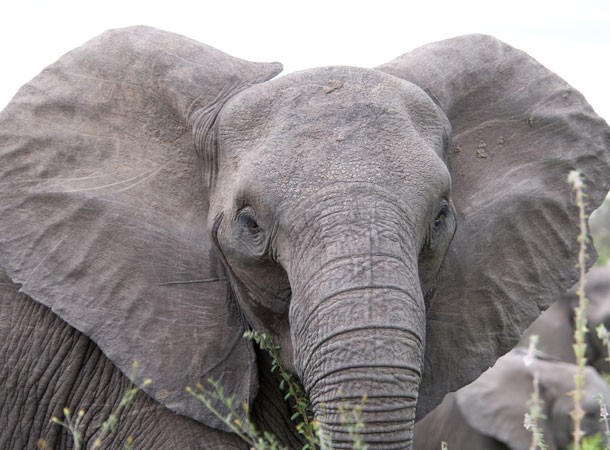
Elephants are good luck symbols any place they roam, especially in India where the god Ganesha is the remover of obstacles and bringer of luck. An image near one’s front door of two elephants facing each other with their trunks facing up is said to welcome visitors to one’s home. Due to their intelligence and long-lives, they also represent wisdom and longevity.
Four-Leaf Clover
 Image by arkytraveler via DeviantArt CC 3.0
Image by arkytraveler via DeviantArt CC 3.0 Four-leaf clovers are firmly tied to the Irish and considered lucky anywhere you find them. St. Patrick originally used a three-leaf clover to represent the Holy Trinity and Irish Druids used it as a good luck charm (due to its triangular shape) before Christianity came to the Emerald Isle. Your odds of finding a four-leaf clover are about 1 in 10,000, but, if you do find one, the four leaves represent hope, faith, love, and luck.



























